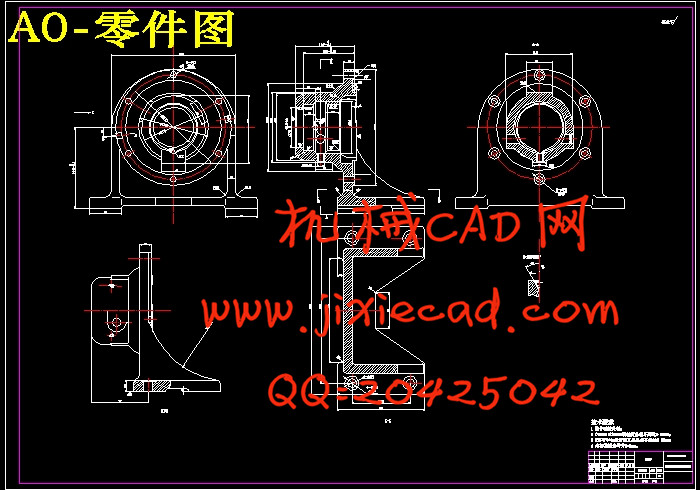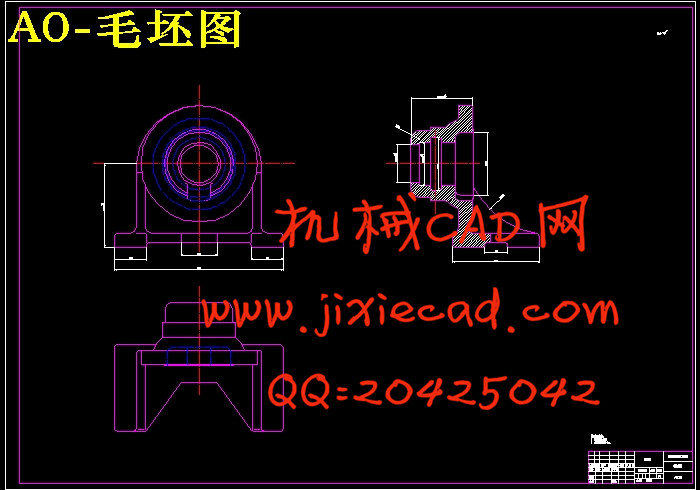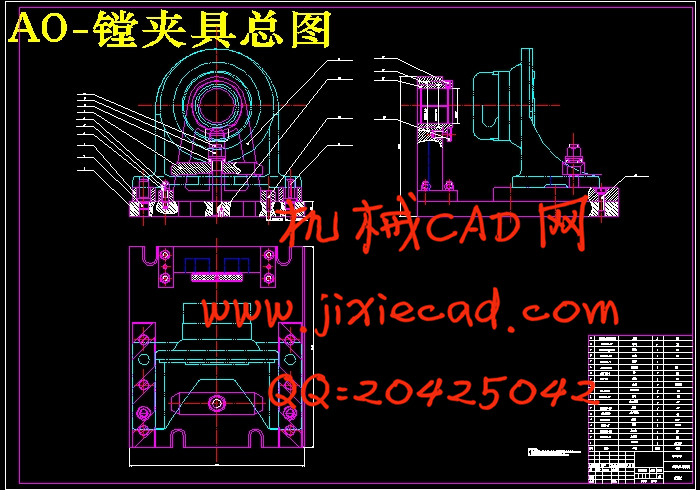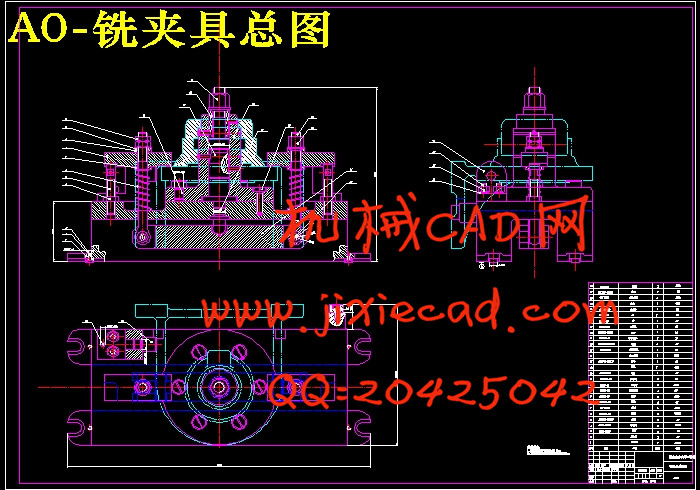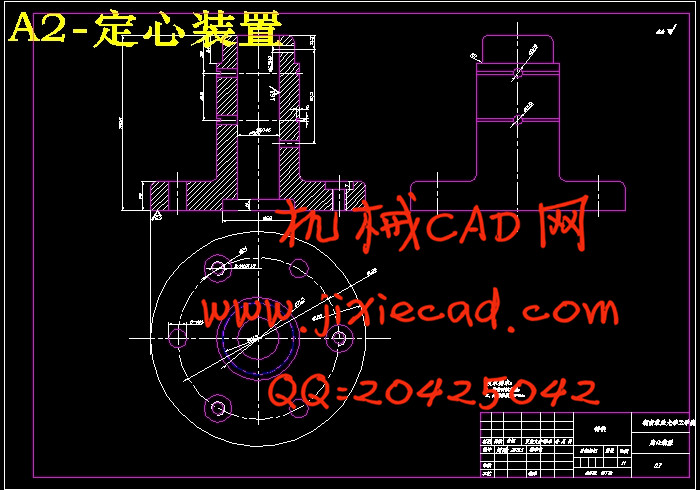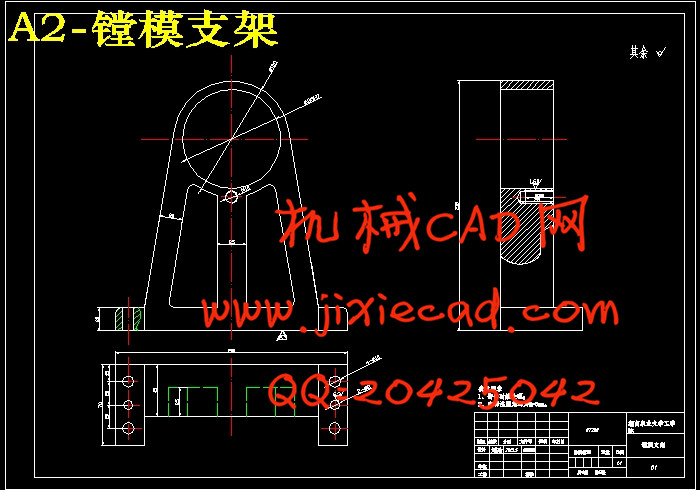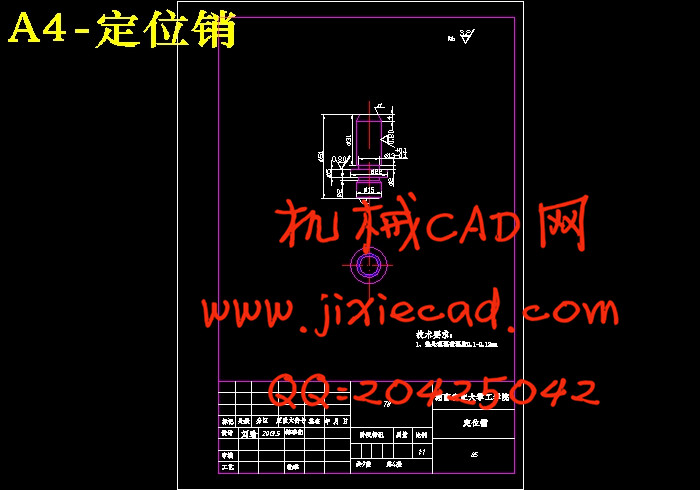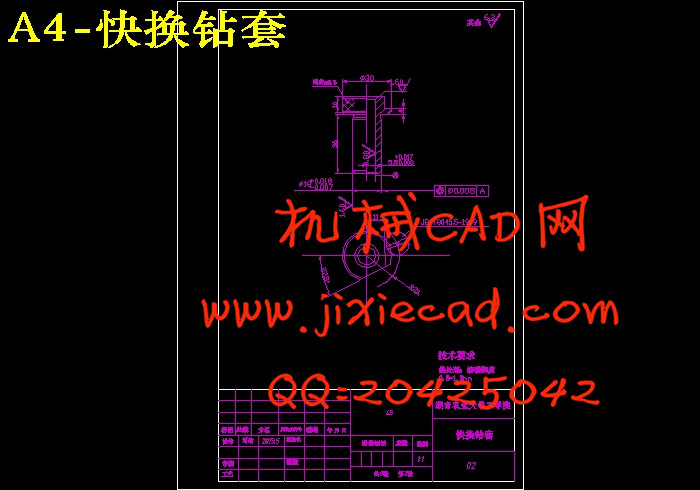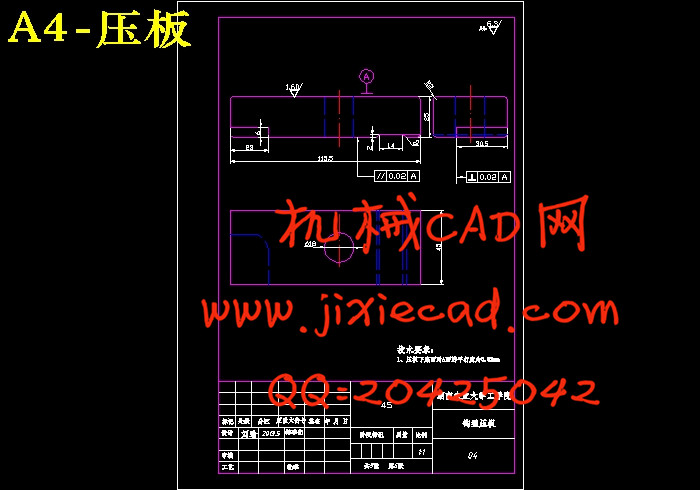设计简介
摘 要:本次设计的是摆线针轮减速器的机座加工工艺及其夹具设计,由于本工件的表面比较复杂,毛坯采用铸造。通过对摆线针轮减速器的机座零件图及其性能要求的分析研究,合理的设计出了一套工艺规程和铣下平面的夹具和精镗主轴孔的夹具。运用所学专业知识,查阅相关资料,完成设计任务,设计出合理的夹具。
关键词:机座; 加工工艺;基准;工艺规程;夹具;
Abstract: The design of the cycloidal pin wheel frame processing technology and fixture design of the reducer, because the surface of the workpiece is complex, the casting blank. Through the analysis of frame parts requirements and performance of the cycloid pin wheel reducer, reasonable designed a set of fixture and fine boring spindle hole planar process and milling fixture. Using the professional knowledge, access to relevant information, to complete the design tasks, design reasonable fixture.
Key words: Engine base; Processing technology; Benchmark;Process planning; Fixture
目 录
摘要……………………………………………………………………………1
关键词…………………………………………………………………………1
1前言…………………………………………………………………………1
2摆线针轮减速机机座加工工艺……………………………………………2
2.1机座结构分析……………………………………………………………2
2.2 机座的主要技术要求……………………………………………………2
2.3机座的材料与毛坯分析…………………………………………………3
2.4 毛坯的种类………………………………………………………………4
2.5加工顺序的安排…………………………………………………………4
2.6定位基准的选择…………………………………………………………4
2.6.1定位基准选择原则……………………………………………………4
2.6.2辅助定位基准…………………………………………………………5
2.6.3初次定位基准…………………………………………………………5
2.6.4定位基准转换…………………………………………………………6
2.6.5粗基准的选择…………………………………………………………6
2.6.6精基准的选择…………………………………………………………7
2.7机座加工工艺过程………………………………………………………7
2.8加工余量的确定…………………………………………………………8
2.9切削用量的选择…………………………………………………………10
2.9.1粗加工时切削用量的选择原则………………………………………10
2.9.2精加工时切削用量的选择原则………………………………………11
2.9.3各工序的切削用量的确定………………………………………………12
2.10 工艺尺寸的计算…………………………………………………………14
2.11工时定额的计算…………………………………………………………15
2.11.1时间定额的内容………………………………………………………15
2.11.2各工序时间定额的计算………………………………………………15
3 机座夹具的设计……………………………………………………………18
3.1机床夹具设计的基本要求…………………………………………………18
3.2机床夹具的分类……………………………………………………………18
3.3 铣下底面夹具设计…………………………………………………………19
3.3.1工件的加工工艺分析……………………………………………………19
3.3.2确定夹具的结构方案……………………………………………………19
3.3.3绘制夹具总图……………………………………………………………22
3.4 镗主轴孔夹具设计…………………………………………………………23
3.4.1工件的加工工艺分析………………………………………………………23
3.4.2确定夹具的结构方案………………………………………………………23
3.4.3绘制夹具总图………………………………………………………………26
4结论……………………………………………………………………………27
参考文献……………………………………………………………………… 27
致谢…………………………………………………………………………28
关键词:机座; 加工工艺;基准;工艺规程;夹具;
Abstract: The design of the cycloidal pin wheel frame processing technology and fixture design of the reducer, because the surface of the workpiece is complex, the casting blank. Through the analysis of frame parts requirements and performance of the cycloid pin wheel reducer, reasonable designed a set of fixture and fine boring spindle hole planar process and milling fixture. Using the professional knowledge, access to relevant information, to complete the design tasks, design reasonable fixture.
Key words: Engine base; Processing technology; Benchmark;Process planning; Fixture
目 录
摘要……………………………………………………………………………1
关键词…………………………………………………………………………1
1前言…………………………………………………………………………1
2摆线针轮减速机机座加工工艺……………………………………………2
2.1机座结构分析……………………………………………………………2
2.2 机座的主要技术要求……………………………………………………2
2.3机座的材料与毛坯分析…………………………………………………3
2.4 毛坯的种类………………………………………………………………4
2.5加工顺序的安排…………………………………………………………4
2.6定位基准的选择…………………………………………………………4
2.6.1定位基准选择原则……………………………………………………4
2.6.2辅助定位基准…………………………………………………………5
2.6.3初次定位基准…………………………………………………………5
2.6.4定位基准转换…………………………………………………………6
2.6.5粗基准的选择…………………………………………………………6
2.6.6精基准的选择…………………………………………………………7
2.7机座加工工艺过程………………………………………………………7
2.8加工余量的确定…………………………………………………………8
2.9切削用量的选择…………………………………………………………10
2.9.1粗加工时切削用量的选择原则………………………………………10
2.9.2精加工时切削用量的选择原则………………………………………11
2.9.3各工序的切削用量的确定………………………………………………12
2.10 工艺尺寸的计算…………………………………………………………14
2.11工时定额的计算…………………………………………………………15
2.11.1时间定额的内容………………………………………………………15
2.11.2各工序时间定额的计算………………………………………………15
3 机座夹具的设计……………………………………………………………18
3.1机床夹具设计的基本要求…………………………………………………18
3.2机床夹具的分类……………………………………………………………18
3.3 铣下底面夹具设计…………………………………………………………19
3.3.1工件的加工工艺分析……………………………………………………19
3.3.2确定夹具的结构方案……………………………………………………19
3.3.3绘制夹具总图……………………………………………………………22
3.4 镗主轴孔夹具设计…………………………………………………………23
3.4.1工件的加工工艺分析………………………………………………………23
3.4.2确定夹具的结构方案………………………………………………………23
3.4.3绘制夹具总图………………………………………………………………26
4结论……………………………………………………………………………27
参考文献……………………………………………………………………… 27
致谢…………………………………………………………………………28


